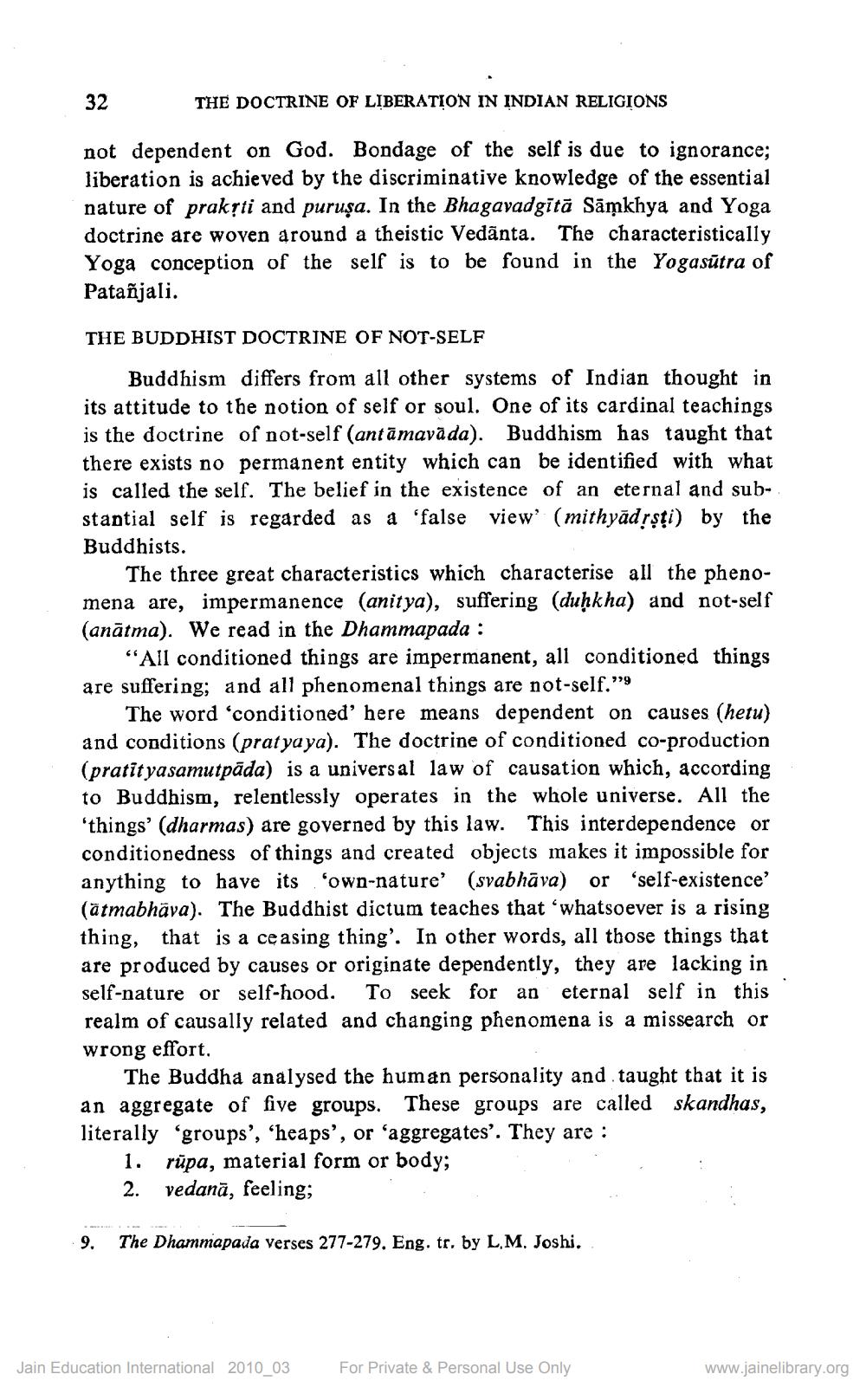________________
32
THE DOCTRINE OF LIBERATION IN INDIAN RELIGIONS
not dependent on God. Bondage of the self is due to ignorance; liberation is achieved by the discriminative knowledge of the essential nature of praksti and puruşa. In the Bhagavadgitā Sāņkhya and Yoga doctrine are woven around a theistic Vedānta. The characteristically Yoga conception of the self is to be found in the Yogasūtra of Patañjali.
THE BUDDHIST DOCTRINE OF NOT-SELF
Buddhism differs from all other systems of Indian thought in its attitude to the notion of self or soul. One of its cardinal teachings is the doctrine of not-self (antāmavāda). Buddhism has taught that there exists no permanent entity which can be identified with what is called the self. The belief in the existence of an eternal and substantial self is regarded as a 'false view (mithyādęsti) by the Buddhists.
The three great characteristics which characterise all the phenomena are, impermanence (anitya), suffering (duḥkha) and not-self (anātma). We read in the Dhammapada :
“All conditioned things are impermanent, all conditioned things are suffering; and all phenomenal things are not-self.”9
The word "conditioned' here means dependent on causes (hetu) and conditions (pratyaya). The doctrine of conditioned co-production (pratit yasamutpāda) is a universal law of causation which, according to Buddhism, relentlessly operates in the whole universe. All the 'things' (dharmas) are governed by this law. This interdependence or conditionedness of things and created objects makes it impossible for anything to have its own-nature' (svabhāva) or ‘self-existence' (ätmabhāva). The Buddhist dictum teaches that 'whatsoever is a rising thing, that is a ceasing thing'. In other words, all those things that are produced by causes or originate dependently, they are lacking in self-nature or self-hood. To seek for an eternal self in this realm of causally related and changing phenomena is a missearch or wrong effort.
The Buddha analysed the human personality and taught that it is an aggregate of five groups. These groups are called skandhas, literally 'groups', 'heaps', or 'aggregates'. They are :
1. rūpa, material form or body; 2. vedanā, feeling;
9.
The Dhammapada verses 277-279. Eng. tr. by L.M. Joshi.
Jain Education International 2010_03
For Private & Personal Use Only
www.jainelibrary.org




